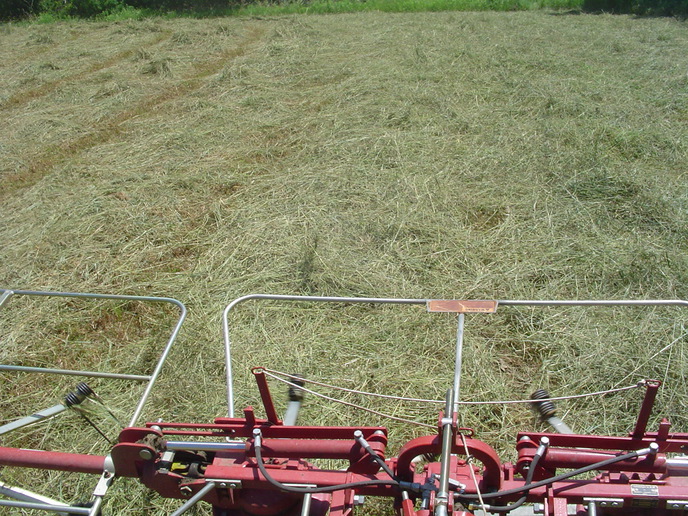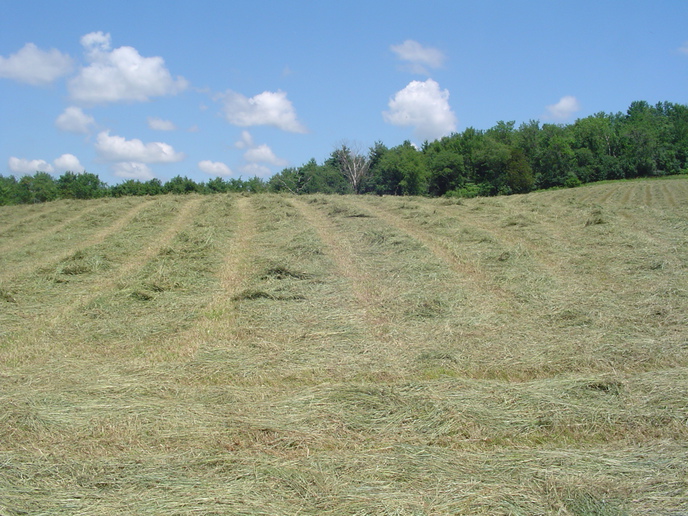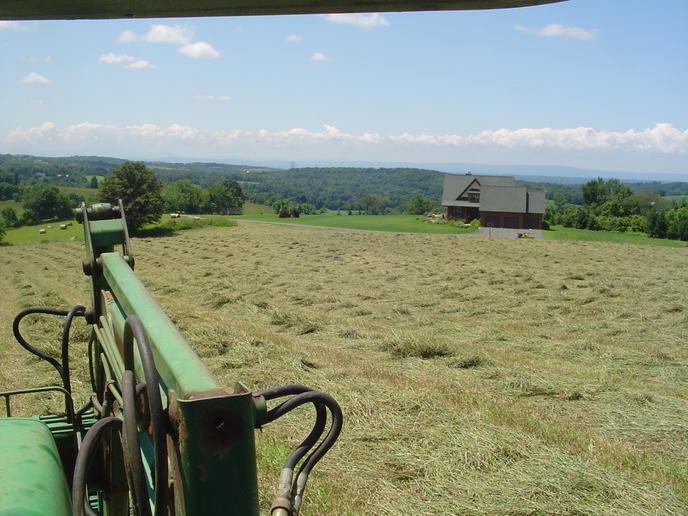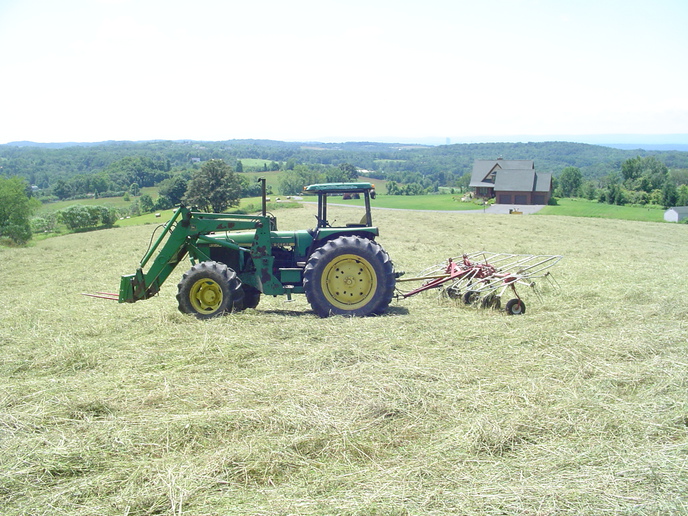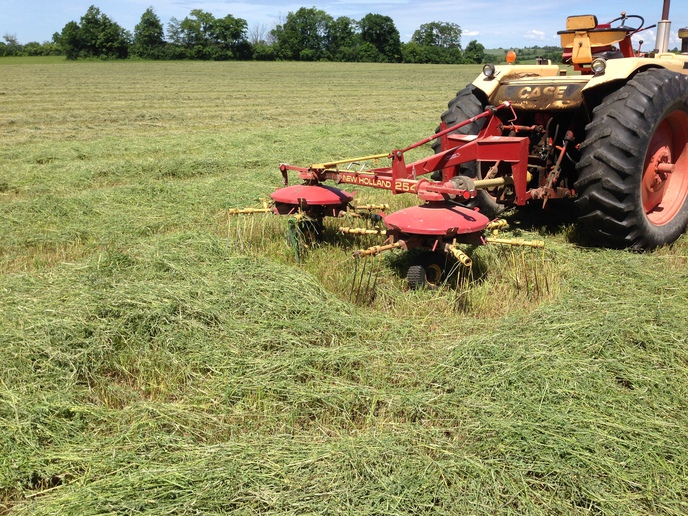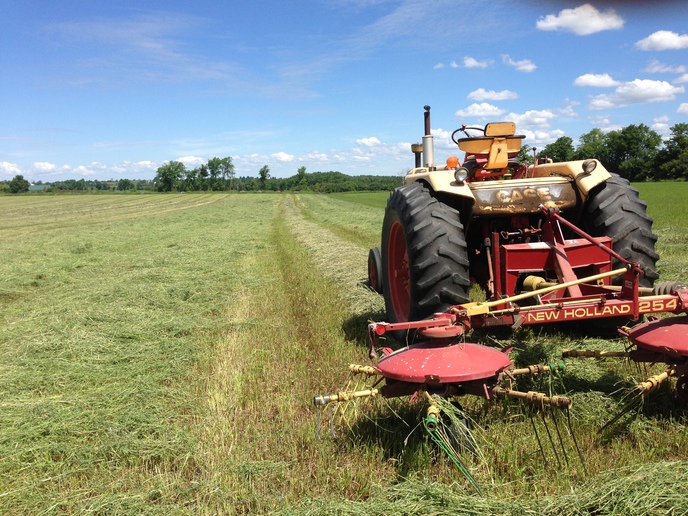We are having some good(dry) haymaking weather here in PA and I've finally gotten some hay made.
It was so thick and matted that I was constantly jamming the reel on the haybine and clogging the cutterbar from the volume of grass. I bought a 2 basket tedder to help me dry it, and I got most of the first cutting up - now I'm wondering how you guys use your tedders?
Do you always plan on tedding or only if it's overly wet? My haybine is a 9'-0" cut and I use to leave the swath pretty wide before I had the tedder to optimise drying. Now I am thinking that if I plan on having to ted hay to help dry it, I should always set a tight windrow behind the habyine to keep from running over it with my tractor tire and then come back later to ted it back out after the ground has dried.
I only do orchard grass, timothy and clover - no alfalfa. How do you guys typically use your tedders, specifically in the northeast climates with native grass hay?
Any and all thoughts/input appreciated.
Thanks,
Jameson
It was so thick and matted that I was constantly jamming the reel on the haybine and clogging the cutterbar from the volume of grass. I bought a 2 basket tedder to help me dry it, and I got most of the first cutting up - now I'm wondering how you guys use your tedders?
Do you always plan on tedding or only if it's overly wet? My haybine is a 9'-0" cut and I use to leave the swath pretty wide before I had the tedder to optimise drying. Now I am thinking that if I plan on having to ted hay to help dry it, I should always set a tight windrow behind the habyine to keep from running over it with my tractor tire and then come back later to ted it back out after the ground has dried.
I only do orchard grass, timothy and clover - no alfalfa. How do you guys typically use your tedders, specifically in the northeast climates with native grass hay?
Any and all thoughts/input appreciated.
Thanks,
Jameson


